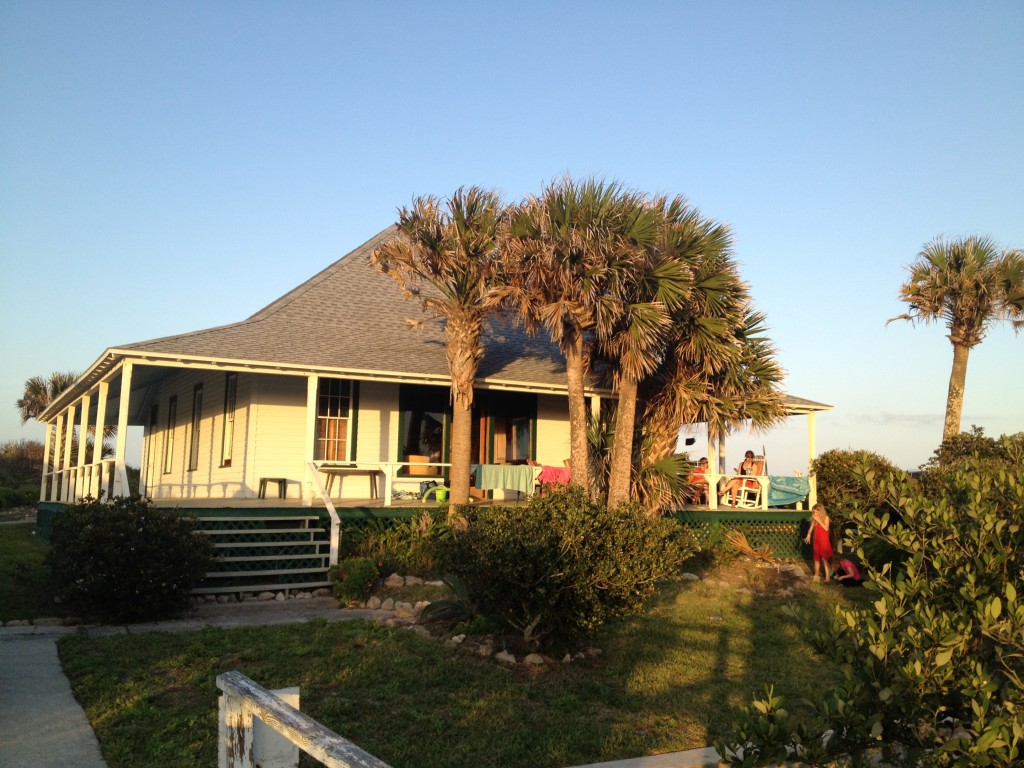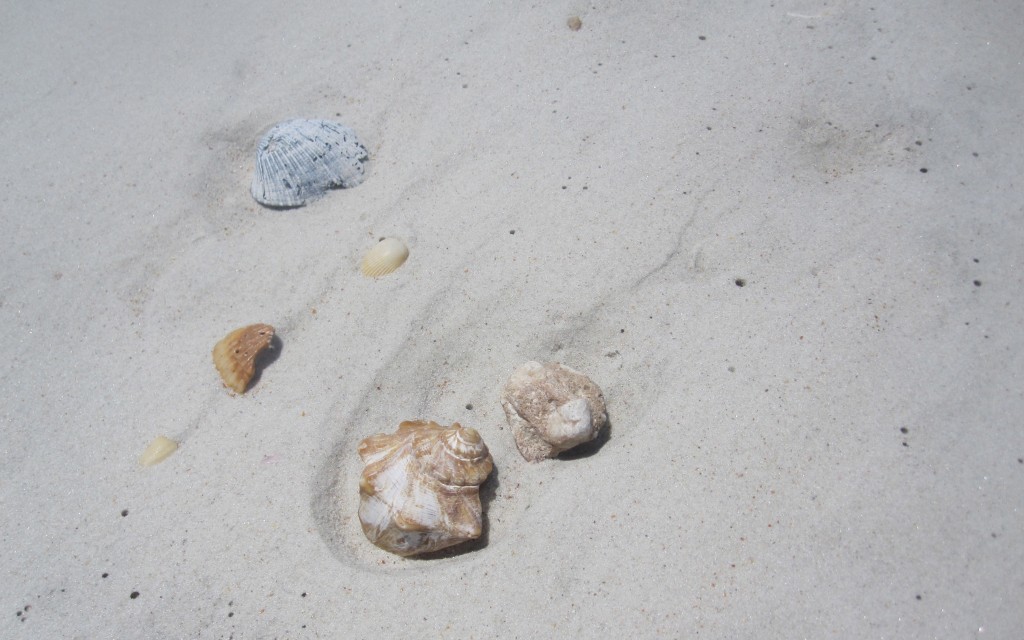Some of my garden nemesis on display: Nandina, lantana, Boston fern, and that vine which shall remain nameless but produces cream and tannish-purple, black polka-dotted little pitcher plant flowers (not shown here).

No sweeping lawn, ancient trees, stone towers, courtyard, or flapping flags decorate my personal Downton Abbey. Rather a wrap-around porch, with a semi-detached kitchen, and a peaked roof define The Lodge, a Cracker-style wooden house that has played a main character in my life.

Pennsylvania millionaire Thomas Mellon, brother of the former United States Treasury secretary Andrew Mellon, built The Lodge around 1895 as a fishing lodge. The old house is perched on a constantly shifting spit of land jutting into the Atlantic, 15 miles south of St. Augustine, a town celebrating its 500th birthday. Author Marjorie Kinnan Rawlings played cards here. Other celebrities visited the family over the years. Now the house’s future is as tenuous as that grand fictitious English estate. Continue reading
 Shells are my booty from a weekend spent with friends in a place called Summer Haven. (Evocative name. I think I want to call my house Summer Haven. However it is decidedly NOT in the line of a steady ocean breeze.)
Shells are my booty from a weekend spent with friends in a place called Summer Haven. (Evocative name. I think I want to call my house Summer Haven. However it is decidedly NOT in the line of a steady ocean breeze.)
Nothing like a beach littered with craft supplies, free for the taking. I have a little memory project in mind for these beauties, or ones very similar to these. More about the weekend, and the craft, coming in the next day or two.
Delighted to find a brave and outgoing ambassador for its species, Clara quickly made a leafy home for one snail, Teresa, in a recycled yogurt container.
In her bedroom, she transferred the snail to a toy glass and left the room for awhile. A few hours passed. When Clara returned to visit, she cried out. Teresa had exited the glass, which was somehow tipped on its side and its leaves scattered. Clara and I searched for the snail, eventually finding her, camouflaged, attached to the side of the wooden toy box.
I suggested that since Teresa was obviously no longer content in her glass, that it was time for Clara release her, emphasizing that she would certainly be happier in her own habitat. From past experiences I know this release process can be an emotional one. (When Clara released a tiny spider she had caught in her room a week or so ago, she cried for a full 20 minutes. How was I to know that they had built a relationship over the three days Clara held the spider in captivity? I hadn’t even known the spider had been in captivity.) In order for Clara to say her proper parting words to Teresa, I left her alone on the kitchen stoop. She sat on the back steps and I heard her talking to the snail while I paid some bills over the phone.
What came next was unexpected. Clara pulled open the screen door with a set sad expression. She told me the snail died before she could set it free. She must have kept it inside too long. When I seemed unconvinced, she reluctantly led me to its remains, which were gooey and gnarled. Clara, what happened? I asked. Her set face dissolved. Her cover story dissolved (Wait, my daughter has learned to make cover stories?) I didn’t know, she said. I should have asked you first. I wanted to take her out of her shell. I didn’t know it would kill her. There are a lot more snails. I didn’t know.
I listened for a minute as she tossed her mixed emotions out one after the other as explanation, denial, statements of innocence, confusion and pure sadness. I just hugged her as I confirmed she hadn’t meant to hurt Teresa. She didn’t know.
A very sad lesson, which days later Clara still brings up. She hasn’t picked up any other garden snails. When a snail appears in the illustrations of one of her books she looks at me earnestly and says she didn’t know snails were attached to their shells.
I spared the readers the “after” pictures. Teresa was just a snail, but she’d had a name and was Clara’s friend for a brief time.